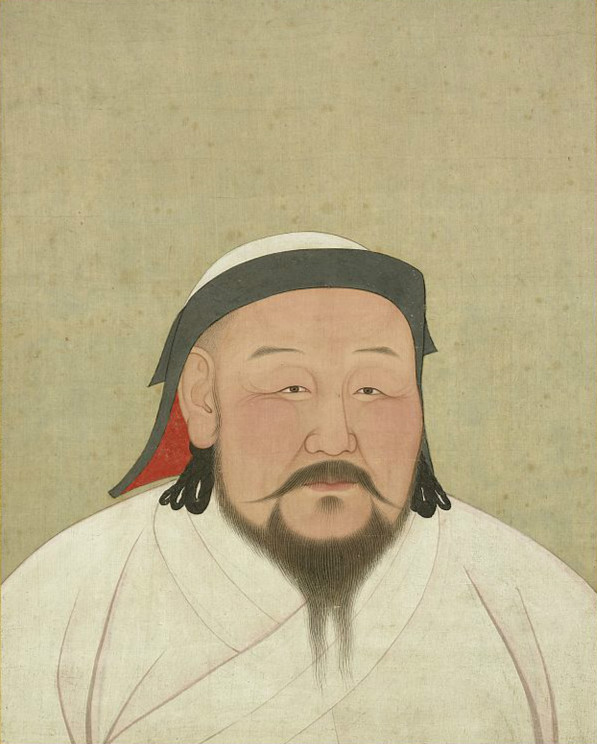Kublai Khan
On pages 66 to 67 of Morris Rossabi's Khubilai Khan: His Life and Times (paperback), he has this to say of the portrait and of a later portrait in 1280 of a hunt, also seen in the English Wikipedia article for Kublai Khan:
In the Artibus Asiae article The Portraits of Khubilai Khan and Chabi by Anige (1245-1306), a Nepali Artist at the Yuan Court, Anning Jing provides the history of this painting and that of Kublai's wife Chabi, painted by a Nepalese artist named Anige, who was a confidant of Kublai and was commissioned to oversee several public works projects as well.A Chinese portrait of him painted around this time [i.e. roughly the time of the rebellion of Li Tang and execution of Wang Wentong in 1262] shows a robust, determined man. He wears a simple white cloth garment; no silks or furs adorn his body. His black and white hat is hardly lavish, and his mustache and beard are trim and obviously cared for. Most important, the picture shows that Khubilai had not yet abandoned himself to sensual pleasures. Though certainly not gaunt, neither was he obese, as he became toward the end of his reign. Probably food, Chinese or any other kind, had not yet become a consuming passion; nor does he show any sign of being a heavy drinker, as later he would become. His alertness and robustness contrast sharply with his appearance in a painting executed in 1280. Two decades after assuming power in China, he had become grotesquely fat.
|
Plik jest wierną reprodukcją fotograficzną dwuwymiarowego utworu, znajdującego się w domenie publicznej z następującego powodu:
Zgodnie z oficjalnym oświadczeniem Wikimedia Foundation wierne reprodukcje dwuwymiarowych utworów z domeny publicznej są w domenie publicznej, zajmowanie przeciwnego stanowiska godzi w samą ideę domeny publicznej (więcej w: Commons:When to use the PD-Art tag).
Niniejsza reprodukcja jest więc również własnością publiczną. Użytkowanie tego dzieła może być zabronione lub ograniczane przez miejscowe prawo na obszarze jego jurysdykcji; patrz: Commons:Reuse of PD-Art photographs. | ||||
Więcej informacji o licencji można znaleźć tutaj. Ostatnia aktualizacja: Tue, 05 Jul 2022 15:25:55 GMT
